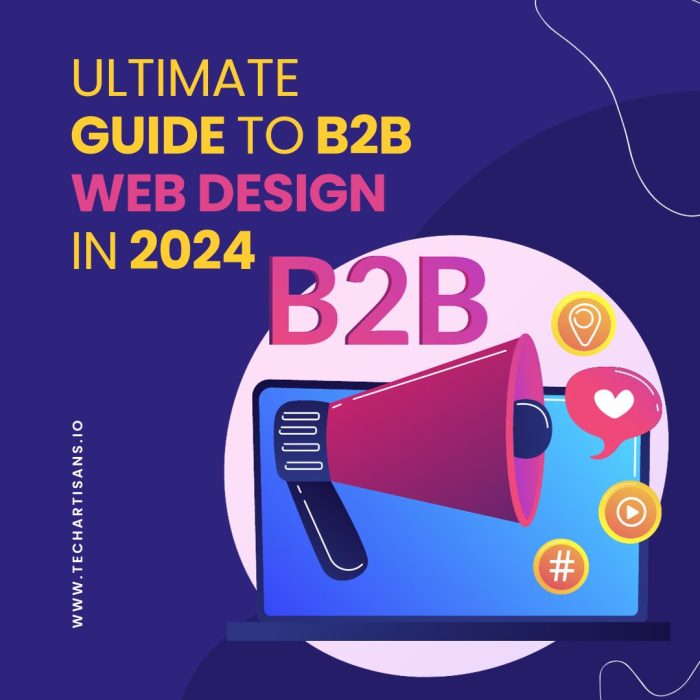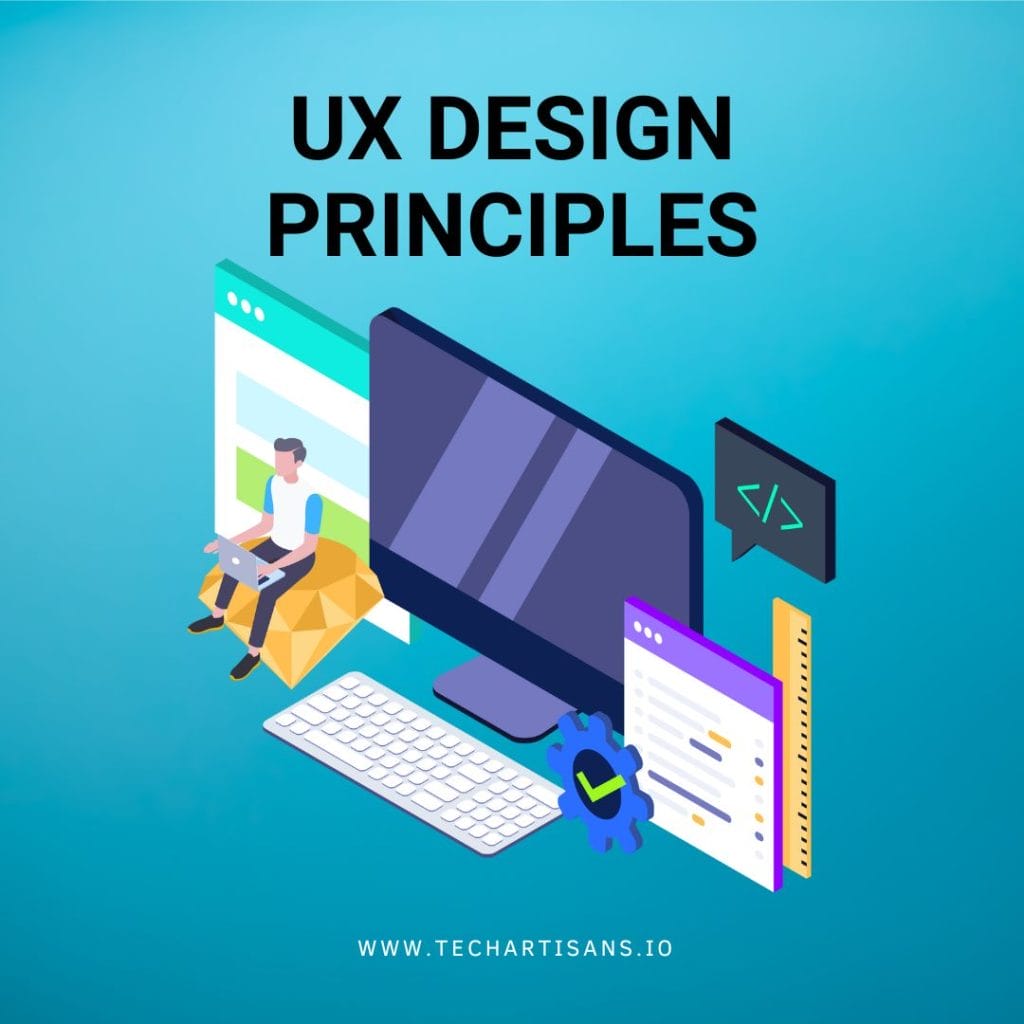In today’s ever-changing digital world, a user-friendly B2B web design is not just a website; it’s a dynamic tool to boost growth, nurture customer relationships, and stay ahead of the competition. Over the years, B2B web design trends have drastically evolved, adapting to the ever-changing needs of the digital consumer.
This comprehensive guide will provide the expertise and resources necessary to create a manufacturing website that effectively connects your desired audience and propels your business toward remarkable expansion.
B2B Web Design

B2B web design involves creating and maintaining a website that meets the needs and preferences of business users. Unlike B2C websites, B2B websites prioritize information, credibility, and usability.
A great B2B web design can impact buying decisions by building trust, demonstrating expertise, and making navigation easy for potential business clients, especially in manufacturing.
1. How It Differs From B2C Web Design

B2C websites thrive on emotional engagement, focusing on visual appeal and intuitive navigation to resonate with individual consumers. They employ storytelling, vibrant images, and compelling calls to action to create an immersive shopping experience.
In B2B, like design manufacturing, websites focus on logic and efficiency. They offer detailed info to build credibility and expertise, favoring simplicity for easy navigation and clear messages that help business clients make informed decisions.
2. Role of Branding and Messaging to Appeal to Decision-makers

Branding and messaging are fundamental in B2B web design, especially for manufacturing websites. They shape your brand’s identity and impact potential clients’ views and choices. A brand image creates trustworthiness and reliability and builds loyalty among users. This is vital in B2B markets as buying decisions frequently require long-term commitments and substantial trust.
B2B Web Design Trends for 2024
Let’s explore the cutting-edge B2B web design trends that are set to redefine the digital landscape, particularly for design manufacturing.
1. Motion Graphics & Video

Motion graphics and short-form video content are used in B2B web design, particularly in manufacturing. Incorporating short-form videos into your website facilitates engagement and enhances the user experience. These videos can showcase product features, assembly instructions, or even guided factory tours.
2. Parallax Scrolling & Micro Animations

Parallax scrolling and micro animations are gaining traction in B2B, notably in manufacturing website design. They provide visual depth and dynamic interaction, enhancing the user experience by stimulating engagement and creating an immersive digital environment.
3. Kinetic Typography

This powerful visual element can add a dynamic, engaging dimension to your design manufacturing.
Utilizing kinetic typography can bring your content to life, making it more engaging and memorable. It highlights important information, guides users through your site, and evokes emotional responses.
4. Dark Mode & White Space

Dark mode, an emerging aesthetic trend, is anticipated to make significant inroads in B2B web design in 2024.
Strategic use of white space is also important. White space enhances readability by allowing content to breathe and focusing attention on key information.
5. Bold, Organic Shapes & Swiss Design

2024 will witness a creative blend of bold, organic shapes and the time-honored Swiss Design in B2B web design, particularly manufacturing designs. Abstract, geometric shapes can bring a unique, modern feel to your website, capturing users’ attention and making your brand stand out.
On the other hand, Swiss Design, known for its minimalistic and clean aesthetics, reinforces clarity and readability. It employs a strict grid-based design, sans-serif typography, and a strong preference for photography over illustrations.
6. Typography-Driven Designs

Typography-driven designs are set to revolutionize the B2B web design space. This approach uses text-only hero images to create a powerful, striking visual impact. By the power of typography and clever use of color, it communicates key messages clearly and directly, making it particularly effective for manufacturing designs.
7. Interactive Data Visualization & 3D Elements

Interactive data visualization and 3D elements are rising in B2B web design, particularly manufacturing design. These features allow users to interact with data and visuals directly, enhancing user engagement and understanding. 3D elements give a realistic and immersive feel, while interactive data visualization enables users to understand complex data in a simple, interactive way, driving meaningful insights.
8. Content Layering & Grainy Gradients

Content layering is an effective strategy in B2B web design, especially for manufacturing designs. It involves stacking elements to create a depth effect, enhancing the visual hierarchy, and guiding user attention to crucial information. Grainy gradients, on the other hand, introduce a texture effect to flat gradients, adding richness and depth to your design.
9. Accessibility

Accessibility will take center stage in B2B web design, particularly in manufacturing website design. It’s about creating websites that everyone, including those with disabilities, can use efficiently.
Accessible web design ensures that content is easy to read, navigate, and understand, regardless of one’s abilities. It involves considerations like color contrast for those with vision impairments, text size, and alternative text for images.
Manufacturing Website Design

In B2B web design, manufacturing design is a dynamic, evolving field that demands a strategic fusion of aesthetics, functionality, and user experience.
1. Unique Challenges and Requirements

- Manufacturing companies often have extensive product catalogs. The challenge lies in presenting these in a user-friendly manner that allows easy navigation and searchability.
- The details of manufacturing products can be quite technical and complex. The website design must present this information in a digestible format for diverse audiences.
- The primary goal of a B2B manufacturing website is not immediate sales but lead generation. The design should facilitate this.
- A well-designed website can elevate the brand perception of a manufacturing company. It must convey the company’s capabilities, quality, and reliability.
- Manufacturing websites must incorporate features like FAQs, technical documentation, and live chat to provide efficient customer service.
- As more B2B buyers use mobile devices for research, manufacturing websites must ensure optimal viewing and interaction across various devices.
2. Importance of Showcasing Products, Processes, and Capabilities

Showcasing products, processes, and capabilities holds paramount importance in manufacturing design for the following reasons:
- Displaying products effectively allows potential clients to quickly gauge the scope and quality of a manufacturer’s offerings. This can streamline the decision-making process and enhance lead generation.
- A company can demonstrate its commitment to quality and efficiency by explaining the manufacturing processes. This transparency builds trust and credibility with potential clients.
- Highlighting capabilities like advanced machinery or expert teams allows a company to showcase its competitive edge. This can attract clients looking for specific qualifications or standards.
- Detailed, easy-to-understand information about products, processes, and capabilities empowers potential clients to make informed decisions. This can lead to higher conversion rates and customer satisfaction.
- Showcasing these elements also contributes to brand positioning, enabling a company to stand out in a competitive market, distinctly conveying its unique value proposition.
3. Case Studies of Effective Manufacturing Website Designs

Case studies provide valuable insights into successfully applying the principles of manufacturing design.
- “Company A” successfully implemented a comprehensive product catalog on its website. The easy-to-navigate interface allowed potential clients to quickly identify and examine suitable products, effectively enhancing lead generation.
- “Company B” showcased its advanced manufacturing processes, underlining its commitment to quality and efficiency. This transparency nurtured trust and credibility amongst potential clients, boosting their market presence.
- “Company C” displayed unique capabilities, such as an expert team and state-of-the-art machinery. This demonstration of competitive edge attracted clients seeking specific industry standards, positively impacting the overall brand positioning.
Best Practices for B2B Web Design

Best Practices for B2B Web Design are as follows:
1. Focus on the Target Audience
Understanding and addressing the target audience’s needs is paramount in B2B web design. It’s about knowing who your users are and what they want. This understanding helps tailor a website’s design, functionality, and content to meet the audience’s specific needs.
Effective audience targeting involves comprehending their pain points, challenges, and aspirations. It enables a more personalized, relevant user experience that resonates with the audience.
2. Consistent Branding

A uniform brand image is pivotal in B2B web design, wherein all visual and textual elements align with your brand’s style and message. This consistency extends from logos, color schemes, and typography to the tone of content and overall website aesthetics.
Maintaining brand consistency reinforces brand recognition, instilling a sense of familiarity among your audience. It communicates a strong, unified brand narrative that resonates with viewers, fostering trust and credibility.
3. Simplified Layout

In B2B web design, a simplified layout is key. It emphasizes clarity and user-friendliness, ensuring users can easily navigate the site and find essential information without hassle.
A clutter-free, intuitive layout reduces cognitive load, making the user experience smooth and enjoyable. This involves structuring information logically, using clear headings, and employing a clean, consistent design language.
4. Strong CTAs

Strong Call-To-Action (CTA) elements strategically guide users toward desired actions on a B2B website. They serve as signposts, leading visitors through the buyer journey, from browsing to conversion.
CTAs can be in the form of buttons, links, or prompts that encourage actions such as “Request a Quote,” “Download a Whitepaper,” or “Contact Us.” CTAs should be clear, compelling, and strategically placed in manufacturing website design to maximize visibility and engagement.
5. High-Quality Visuals

High-quality visuals offer a quick, intuitive way to convey information, making your website engaging and visually appealing. High-resolution images and videos help customers better understand your products and processes.
Videos, in particular, can showcase manufacturing processes in action, reinforcing transparency and trust. Similarly, clear images of products, machinery, or teams can underline a commitment to quality and professionalism.
6. Enhanced User Experience

Enhancing user experience is pivotal in B2B web design, especially in creating an intuitive and engaging manufacturing design. It’s about crafting an online environment where visitors find value, leading to increased satisfaction and loyalty.
A well-structured layout, easy navigation, fast loading speeds, and mobile-friendly design are all integral to an exceptional user experience. These factors make it easier for visitors to explore your offerings and understand your value proposition.
7. SEO Best Practices
SEO best practices are vital in B2B web design, especially manufacturing design. SEO helps enhance your website’s visibility and ranking on search engines, driving organic traffic.
By involving techniques like keyword optimization, you can ensure that your content is easily discoverable by your target audience.
Role of Agencies in B2B Web Design

Professional web design agencies are vital to crafting effective B2B websites, bringing expertise, experience, and a fresh perspective. Let’s explore the benefits of working with them.
1. Expertise and Experience
Engaging a dedicated web design agency brings expertise and experience to your project. Agencies have a diverse portfolio, showcasing their ability to navigate various industries. They are often up-to-date with the latest trends and technological advancements in B2B web design, ensuring your website is contemporary and competitive.
2. Access to Comprehensive Services

Web design agencies often offer comprehensive services, from website design and development to SEO and content creation. This ‘all-in-one’ approach eliminates the need to seek these services separately, offering convenience, consistency, and an integrated strategy for your website.
3. Time and Cost Efficiency
With skilled professionals handling your B2B web design, you can save significant time and effort that you can redirect toward core business operations. Moreover, an efficiently designed website can improve user engagement and conversions, making it a cost-effective choice in the long run.
4. Objective Perspective

Finally, a web design agency can provide an external, objective perspective to your project. They can critically evaluate your site from your audience’s viewpoint, identify potential areas of improvement, and create a design that resonates best with your target users.
Case study: How Agencies Have Transformed B2B Web Designs

Let’s explore some case studies on the transformation of agencies.
1. Before the Transformation
XYZ Manufacturing, an SME in the manufacturing sector, had a basic website with outdated design elements. It needed a clearer structure and better mobile compatibility. The site’s user experience could have been better, resulting in high bounce rates and low conversions.
2. Agency Involvement

ABC Agency, a seasoned player in B2B web design, was brought on board. They began by conducting a comprehensive website audit, identifying areas that needed significant overhaul.
3. Transformation Process
The agency focused on creating a user-friendly layout and integrating strong CTAs into the design. They incorporated high-quality visuals, including images and videos, to communicate XYZ’s products and services effectively. SEO best practices were enforced, with strategic placement of relevant keywords like ‘B2B web design’ and ‘manufacturing website design.
4. Post-Transformation Results

The transformed website showcased an evident improvement in user engagement and significantly reduced bounce rates. Organic traffic increased due to improved search engine rankings, leading to higher visibility online.
5. Cost and Duration of B2B Web Design Projects

When embarking on a B2B web design project, particularly for manufacturing design, it’s crucial to understand the potential costs and timeline involved. This knowledge aids in effective planning and budgeting, ensuring a smooth and efficient design process.
Factors Influencing the Cost of Web Design Projects

The following are the factors that influence the cost of web design projects:
1. Complexity of the Design
The complexity of your B2B web design, especially for a manufacturing website, directly impacts the cost. A simple design with basic features will be less expensive than a complex design with custom features, multi-language support, or eCommerce functionality.
2. Agency’s Expertise

The level of the agency’s expertise also influences the cost. More experienced agencies may charge a premium for their services, but they bring valuable insights, creativity, and professionalism to the project.
3. Project Timeline
A compressed timeline for project completion can drive costs upward as well. If your project needs to be completed quickly, agencies may charge more for the accelerated work pace.
Average Duration For B2B Web Design Projects

Let’s dive into the key aspects of average duration for B2B Web design projects.
1. Timeframe for Standard B2B Web Design
The timeline for a standard B2B web design project is typically between 10 to 12 weeks. This includes initial consultations, design, development, and testing phases. It’s important to note that this average can vary based on the project’s scope and complexity.
2. Timeframe for Advanced B2B Web Design

For more advanced projects, particularly those involving complex manufacturing website design, the timeframe can extend to 14-20 weeks. This includes custom features, advanced SEO tactics, and a comprehensive user experience scenario. Changes in the scope during the development process can cause delays.
3. Ongoing Maintenance and Updates

Post-launch, regular website maintenance, and updates are crucial. While not counted in the initial design timeline, keeping your B2B website optimized and relevant is an ongoing process. Web design is not a one-and-done task; it evolves with your business and technology advancements.
Conclusion
In 2024 and beyond, a well-constructed, user-friendly, and SEO-optimized manufacturing website design is paramount. It serves as your business’s digital storefront – a platform where potential clients get their first impression of your brand. A professionally designed website can help elevate your brand, generate leads, and drive conversions.
As technology progresses, an outdated or poorly designed website can negatively impact your business and set back growth. Invest wisely in your web design, which can make the difference between you and your competition. Companies must consider this as they plan their strategies for the future.
FAQs
Q1: Why is B2B web design important for my manufacturing business?
B2B web design is crucial as it serves as your digital storefront. A well-designed website can enhance your brand’s online presence, generate leads, and drive conversions, ultimately contributing to your business’s growth and success.
Q2: How much does B2B web design typically cost?
The cost of B2B web design can vary greatly depending on the design’s complexity, the agency’s expertise, and the project timeline. Discussing your requirements, budget, and timeline with potential agencies for an accurate quote is important.
Q3: What is the average duration of a B2B web design project?
A standard B2B web design project typically takes between 10 to 12 weeks, while more complex projects can extend to 14-20 weeks. This timeframe includes initial consultations, design, development, and testing phases.
Q4: Can I update my website after it’s designed and launched?
Yes, regular updates and maintenance are crucial to keep your website relevant and optimized. Web design is not a one-and-done task; it’s an ongoing process that evolves with your business and technology advancements.
Q5: How does SEO factor into B2B web design?
SEO is integral to web design as it helps improve your website’s visibility on search engines. With strategic keyword placement and best practices, you can attract more organic traffic to your site, leading to higher visibility online.
Q6: What makes a manufacturing website design effective?
An effective manufacturing design is user-friendly, visually appealing, and strategically structured. It should showcase your products and services effectively, have strong calls to action, and be mobile-friendly. Additionally, implementing SEO best practices can significantly enhance site visibility and user engagement.







